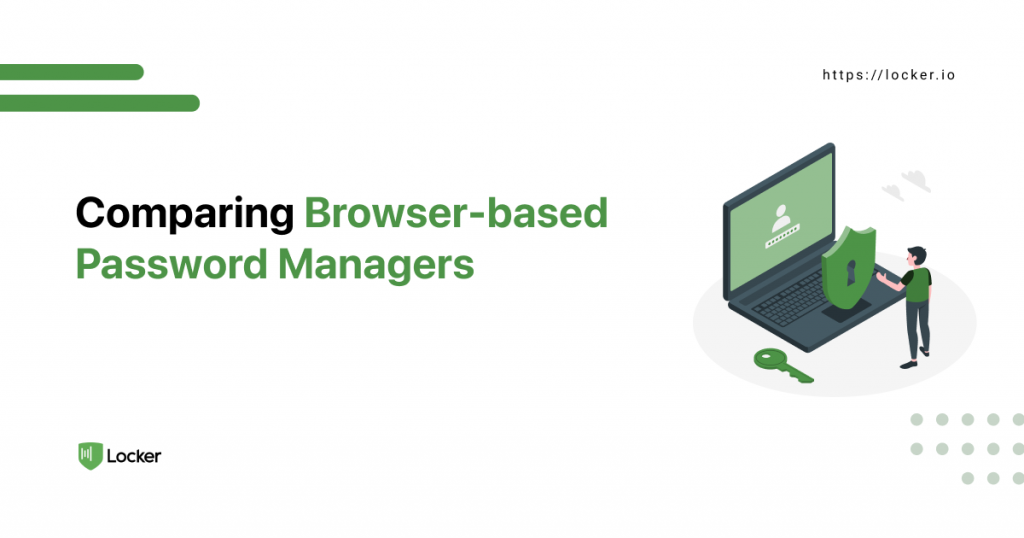
Most browsers like Chrome, Safari, Firefox, and Opera have a default password manager that allows users to save personal passwords for a seamless browsing experience.
We’ll go over what browser-based password managers are all about, as well as their advantages and disadvantages. Then, let’s look over some examples to understand their features better.
What is a Browser-based Password Manager?
Google Chrome, Edge, Firefox, Opera, Safari, and Brave enable in-browser password management by default. These tools are similar to standalone alternatives in terms of basic function.
Your browser will automatically ask you if you want to keep your password every time you visit a new website that requires login details.
If you choose to save the logins, the browser will fill out the credentials the next you visit these pages. Isn’t it convenient?
Let’s take a closer look at their pros and cons in the next paragraph!
What are the Pros and Cons of Browser-based Password managers?
The first advantage of built-in password managers is their convenience. You do not need to download any file or register a new account. If you already have an account, you can save your passwords with only a single click.
Moreover, each browser-based password manager also provides a generator that creates strong passwords automatically. It also syncs your data across devices as long as you use the same web browser.
But are they really good?
In fact, password managers in browsers have many shortcomings compared to full-blown password managers.
For example, built-in password tools do not support cross-platform browsing. In addition, there are no advanced features such as a data breach scanner, password health checker, etc.
Browser Password Managers Examples
# 1 Google Chrome
Google Chrome is considered the most popular browser on most platforms and devices, including Apple, Android, and Windows.
Google Chrome provides you with a default tool that does not require installation to save your login credentials.
It uses AES 256-bit SSL/TLS encryption as well as a passphrase feature to provide extra security for your passwords and personal information.
Besides generating and saving passcodes, you also can see your login information with Chrome’s password checkup. This feature is enabled by default.
Read the full Google Chrome password manager review here.
# 2 Firefox
Firefox provides a master password to help you access your vault of passwords. It is similar to the principle that full-fledged password managers are applying.
With 256-bit AES encryption and a Primary Password feature, Firefox offers the features to generate your passwords stronger and save them securely.
Moreover, you can use Firefox Lockwise to auto-fill your password and enable Firefox Sync to save and share passwords across devices.
# 3 Opera
Like Firefox, Opera includes a master key to access your password vault.
This browser includes a VPN option that hides your sensitive information, such as browsing history, your shared location, and so on. The purpose of VPN is to strengthen the security system and even keep your private data safe from skilled hackers.
# 4 Microsoft Edge
Microsoft Edge, like the three options above, has a built-in password manager to save login information for you. It also utilizes AES-256 encryption to add more security to your passwords.
Its storage system allows you to access all of your saved passwords in the password manager section of the browser settings.
You also can export and import passwords if you wish to make a manual backup or recover them from a backup.
Moreover, Edge can autofill your password on Chrome as long as you install the Microsoft Autofill extension. If you use iOS or Android devices, the Microsoft Authenticator app will help you do that work.
#4 Safari
Safari may be an ideal password keeper for Apple fans. As long as you use Apple devices with the same Apple account, your information is all kept by Apple’s iCloud Keychain.
Like other browsers, the password manager of Safari also provides the features of generating, storing, and auto-filling the passwords.
Besides, Apple also utilizes end-to-end 256-bit AES encryption, which functions as a master key. If you want to see the passwords you have created, you will need to log in to your Apple account.
Conclusion
Overall, these browser-based password managers above are somewhat safe and trustworthy for daily accounts.
However, if you want to experience a tool with more features and higher safety, switching to standalone alternative solutions will be a good idea.